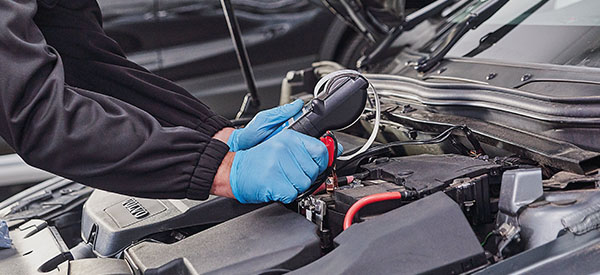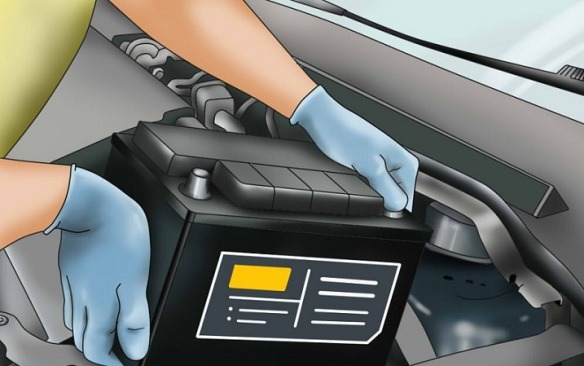Advancements in Low-Speed Electric Vehicles: Lithium Battery Technology Takes the Lead
In recent years, there has been a significant shift towards eco-friendly transportation options, and low-speed electric vehicles (LSEVs) have emerged as a promising alternative. These vehicles are designed for short-distance commutes and are particularly popular in urban areas where congestion and pollution are major concerns. One key factor that has contributed to the increasing popularity of LSEVs is the advancements in lithium battery technology, which has greatly improved their performance and range.
LSEVs are typically powered by batteries that provide electrical energy to the motor, enabling the vehicle to move. Over the years, various battery technologies have been used in LSEVs, including lead-acid batteries, nickel-metal hydride (NiMH) batteries, and lithium-ion batteries. However, lithium battery technology has emerged as the frontrunner due to its superior characteristics and advantages.
One of the main advantages of lithium batteries is their energy density. Lithium-ion batteries have a much higher energy density compared to lead-acid and NiMH batteries, meaning they can store more energy in a smaller and lighter package. This translates to increased range and longer operating time for LSEVs. With advancements in lithium battery technology, LSEVs can now travel further distances on a single charge, making them more practical for daily commuting.
In addition to higher energy density, lithium batteries also have a longer lifespan compared to other battery types. Lead-acid batteries, for example, tend to degrade quickly and require frequent replacements. On the other hand, lithium batteries can last for several years, reducing the overall maintenance cost of LSEVs. This improved longevity makes LSEVs a more sustainable and cost-effective transportation solution.
Furthermore, lithium batteries offer faster charging times, which is a significant advantage for LSEV owners. With advancements in charging infrastructure, it is now possible to charge a lithium battery to full capacity in just a few hours. This means LSEV owners can conveniently recharge their vehicles overnight or during short breaks, allowing for uninterrupted usage during the day.
Another crucial aspect of lithium battery technology is its environmental impact. Unlike lead-acid batteries, lithium batteries do not contain hazardous materials such as lead and sulfuric acid, making them safer to handle and dispose of. Additionally, lithium batteries are highly recyclable, reducing the environmental footprint of LSEVs. This aligns with the overall goal of eco-friendly transportation and contributes to a cleaner and greener environment.
The advancements in lithium battery technology have not only improved the performance of LSEVs but also expanded their applications. Today, LSEVs are not limited to golf courses or gated communities; they are increasingly being used for various purposes such as food delivery, campus transportation, and urban commuting. The enhanced range and durability provided by lithium batteries have made LSEVs a viable option for a wide range of users.

While lithium battery technology has taken the lead in LSEVs, it is important to note that there are ongoing efforts to further improve battery performance and sustainability. Researchers are exploring new materials and designs to enhance energy storage capabilities and reduce production costs. Additionally, advancements in battery management systems and smart charging technologies are being developed to optimize battery usage and prolong lifespan.
In conclusion, advancements in lithium battery technology have revolutionized the low-speed electric vehicle industry. With their higher energy density, longer lifespan, faster charging times, and environmental benefits, lithium batteries have become the preferred choice for powering LSEVs. As technology continues to advance, we can expect even more exciting developments in the field of low-speed electric vehicles, making them an increasingly attractive and sustainable transportation option for the future.
-
 The rated capacity of a starter battery indicates the amount of electrical charge that the battery can store and deliver to start an engine. This capacity is usually measured in ampere-hours (Ah) or cold cranking amperes (CCA). The Ah rating of a battery indicates how many amps it can deliver for one hour before it needs to be recharged....Citeşte mai mult
The rated capacity of a starter battery indicates the amount of electrical charge that the battery can store and deliver to start an engine. This capacity is usually measured in ampere-hours (Ah) or cold cranking amperes (CCA). The Ah rating of a battery indicates how many amps it can deliver for one hour before it needs to be recharged....Citeşte mai mult -
 O baterie cu ciclu profund este un tip de baterie care este proiectată să descarce o parte semnificativă din capacitatea sa de energie stocată înainte de a fi reîncărcată. Spre deosebire de bateriile obișnuite, care sunt utilizate în mod obișnuit în dispozitivele care necesită explozii scurte de energie, bateriile cu ciclu profund sunt folosite în aplicații care necesită alimentare continuă și pe termen lung. Aceste baterii sunt folosite într-un...Citeşte mai mult
O baterie cu ciclu profund este un tip de baterie care este proiectată să descarce o parte semnificativă din capacitatea sa de energie stocată înainte de a fi reîncărcată. Spre deosebire de bateriile obișnuite, care sunt utilizate în mod obișnuit în dispozitivele care necesită explozii scurte de energie, bateriile cu ciclu profund sunt folosite în aplicații care necesită alimentare continuă și pe termen lung. Aceste baterii sunt folosite într-un...Citeşte mai mult -
 As technology continues to advance, the need for reliable and efficient power sources has become more crucial. In recent years, the 12V LiFePO4 battery has gained popularity as a durable and efficient power source for various applications. In this article, we will explore what a 12V LiFePO4 battery is, its advantages over other battery types, and its uses. What...Citeşte mai mult
As technology continues to advance, the need for reliable and efficient power sources has become more crucial. In recent years, the 12V LiFePO4 battery has gained popularity as a durable and efficient power source for various applications. In this article, we will explore what a 12V LiFePO4 battery is, its advantages over other battery types, and its uses. What...Citeşte mai mult -
 Introduction: In recent years, the field of robotics has seen significant advancements, with smart mobile robots playing a crucial role in numerous industries. These robots are designed to perform various tasks, ranging from warehouse automation to healthcare assistance. One of the key factors in enabling their efficient operation and autonomy is the use of lithium batteries. This article explores the...Citeşte mai mult
Introduction: In recent years, the field of robotics has seen significant advancements, with smart mobile robots playing a crucial role in numerous industries. These robots are designed to perform various tasks, ranging from warehouse automation to healthcare assistance. One of the key factors in enabling their efficient operation and autonomy is the use of lithium batteries. This article explores the...Citeşte mai mult -
 In emergency situations, having a reliable source of power is crucial. Whether you're facing a power outage, a natural disaster, or any other unexpected event, having access to electricity can mean the difference between safety and danger. That's why it's essential to have an effective starter battery as part of your emergency preparedness plan. A starter battery is a...Citeşte mai mult
In emergency situations, having a reliable source of power is crucial. Whether you're facing a power outage, a natural disaster, or any other unexpected event, having access to electricity can mean the difference between safety and danger. That's why it's essential to have an effective starter battery as part of your emergency preparedness plan. A starter battery is a...Citeşte mai mult -
 Introduction In recent years, the demand for high-performance and long-lasting energy solutions has been increasing rapidly. As a result, lithium iron phosphate (LiFePO4) 48V batteries have emerged as a popular choice in various industries, including renewable energy, electric vehicles, and off-grid power systems. This article aims to explore the features and benefits of LiFePO4 48V batteries, highlighting their high...Citeşte mai mult
Introduction In recent years, the demand for high-performance and long-lasting energy solutions has been increasing rapidly. As a result, lithium iron phosphate (LiFePO4) 48V batteries have emerged as a popular choice in various industries, including renewable energy, electric vehicles, and off-grid power systems. This article aims to explore the features and benefits of LiFePO4 48V batteries, highlighting their high...Citeşte mai mult -
 Introduction: In today's fast-paced world, where transportation plays a vital role, having a reliable power solution for your vehicle is of utmost importance. The 24V on-board battery charger is an efficient and convenient power solution that ensures your vehicle's battery remains charged at all times. In this article, we will explore the features, benefits, and applications of the 24V on-board...Citeşte mai mult
Introduction: In today's fast-paced world, where transportation plays a vital role, having a reliable power solution for your vehicle is of utmost importance. The 24V on-board battery charger is an efficient and convenient power solution that ensures your vehicle's battery remains charged at all times. In this article, we will explore the features, benefits, and applications of the 24V on-board...Citeşte mai mult

